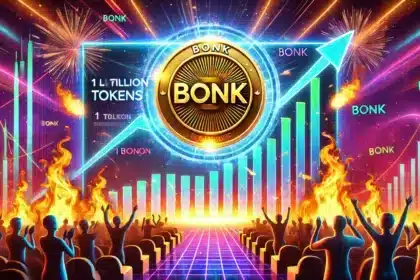On January 17, 2025, Boerse Stuttgart Digital Custody achieved what can only be described as a landmark moment in the history of European finance. By securing the first full license under the European Union’s Markets in Crypto-Assets Regulation (MiCA), the German financial powerhouse established itself as a pioneer in the regulated cryptocurrency sector, the international media reported on Friday. This achievement is not just about regulatory compliance; it represents a new era of innovation and trust for digital assets in Europe.
MiCA, which came into full effect on December 30, 2024, is the first comprehensive regulatory framework of its kind, designed to harmonize crypto asset regulations across all EU member states. This groundbreaking framework aims to provide clarity, stability, and protection in the often volatile and misunderstood cryptocurrency market. For Boerse Stuttgart, being the first to secure this license wasn’t just a feather in its cap—it was a resounding declaration of its leadership in integrating traditional finance and blockchain technology.
Dr. Matthias Voelkel, CEO of Boerse Stuttgart Group, emphasized the magnitude of this milestone. “This isn’t just about obtaining a license—it’s about leading the way for the industry. We’re setting a standard for regulated crypto services across Europe,” he remarked during the announcement. The license opens doors for Boerse Stuttgart to expand its services to banks, brokers, and asset managers across the European Union, allowing it to operate seamlessly in a unified market.
The implications of this achievement are enormous. For years, the European cryptocurrency sector faced challenges stemming from fragmented regulations and a lack of clear guidelines. MiCA changes that by providing a structured approach that fosters innovation while protecting investors. Boerse Stuttgart’s success in obtaining the first license under this framework demonstrates the value of long-term strategic vision, adaptability, and a commitment to regulatory excellence.
This accomplishment underscores not only Boerse Stuttgart’s expertise in navigating complex regulatory landscapes but also its commitment to establishing Europe as a leader in the global crypto economy. The story of January 17, 2025, is not just one of achievement—it is a bold statement about the future of finance, one where innovation and regulation coexist harmoniously to benefit all stakeholders.
The MiCA Revolution: A Unified Framework for Crypto in Europe
The Markets in Crypto-Assets Regulation (MiCA) represents one of the most ambitious regulatory initiatives in financial history. By implementing a single, harmonized framework across 27 EU member states, MiCA aims to eliminate the uncertainties and inconsistencies that have plagued the European cryptocurrency sector for years. Its introduction on December 30, 2024, marked a turning point for digital assets, providing much-needed clarity to investors, businesses, and regulators.

The regulation covers a wide range of crypto assets, from utility tokens to stablecoins, and sets forth comprehensive requirements for crypto asset service providers (CASPs). These include stringent compliance measures, transparency standards, and robust consumer protections. While some industry players have expressed concerns about potential overregulation, MiCA is largely seen as a net positive—a framework that balances innovation with accountability.
For Boerse Stuttgart, MiCA presented an unprecedented opportunity to solidify its leadership in the European financial landscape. By obtaining the first MiCA license, the exchange demonstrated not only its ability to meet the stringent regulatory requirements but also its commitment to advancing the cryptocurrency industry within a secure and regulated environment. The license allows Boerse Stuttgart to operate as a fully regulated entity across the EU, enabling it to provide services such as brokerage, custody, and staking to institutional clients.
The broader significance of MiCA cannot be overstated. For years, the crypto market in Europe was fragmented, with firms needing to secure licenses in each country where they operated. MiCA eliminates this inefficiency by offering a unified regulatory structure. This harmonization is expected to attract more investment into the European crypto sector, fostering innovation and enabling businesses to scale more efficiently.
However, the framework is not without its challenges. Some experts have warned that the increased regulatory scrutiny could impose higher compliance costs on smaller players, potentially stifling competition. Retail investors, too, may face more rigorous reporting requirements, raising concerns about privacy and accessibility. Despite these hurdles, MiCA’s implementation is a significant step forward, signaling Europe’s commitment to becoming a global leader in the digital asset space.
Boerse Stuttgart’s success under MiCA serves as a case study in how regulatory clarity can drive growth and innovation. As other firms follow in its footsteps, the framework is poised to reshape the European crypto ecosystem, creating a landscape where innovation thrives within the boundaries of regulation.
The Journey to MiCA: Boerse Stuttgart’s Pioneering Spirit
Boerse Stuttgart’s path to securing the first MiCA license was anything but ordinary. It was a journey marked by strategic foresight, relentless innovation, and a deep understanding of the cryptocurrency market’s complexities. Since launching its cryptocurrency trading services in 2019, the exchange has consistently pushed the boundaries of what’s possible in the integration of traditional finance and blockchain technology.

One of the key pillars of Boerse Stuttgart’s strategy has been its retail-focused BISON app. Launched as a user-friendly platform for buying and selling cryptocurrencies, BISON quickly gained traction among retail investors. In 2024, the app introduced insured staking services, setting a new standard for security and trust in the industry. This innovation was made possible through a partnership with German insurance giant Munich Re, demonstrating Boerse Stuttgart’s commitment to collaboration and customer-centric solutions.
On the institutional side, Boerse Stuttgart forged partnerships with major players like DZ Bank, enabling the rollout of crypto services to over 700 community banks in Germany. These collaborations not only expanded the exchange’s reach but also established it as a trusted partner for financial institutions navigating the complexities of digital assets.
The exchange’s success wasn’t limited to product innovation. By the end of 2024, Boerse Stuttgart had attracted over one million clients, and its crypto trading volumes had tripled compared to the previous year. Bitcoin alone accounted for nearly 50% of these transactions, underscoring the growing demand for regulated digital asset services. The exchange also held over €4.3 billion in custodial assets, a figure that highlighted its role as a key player in the European crypto market.
These achievements laid the groundwork for Boerse Stuttgart’s MiCA success. By demonstrating its ability to operate at the highest standards of security, transparency, and compliance, the exchange positioned itself as a natural candidate for the first MiCA license. Its pioneering spirit and commitment to innovation have not only set it apart from competitors but also established a roadmap for others in the industry to follow.
As Boerse Stuttgart looks to the future, its journey to MiCA serves as a reminder of the power of vision, resilience, and a customer-first approach. It’s a story that reflects the transformative potential of the cryptocurrency industry and the role that regulated institutions can play in shaping its future.
The implementation of the Markets in Crypto-Assets Regulation (MiCA) marks a transformative chapter for the cryptocurrency industry in Europe. For years, the market has been hamstrung by fragmented regulations, inconsistent licensing requirements, and a pervasive sense of uncertainty. These challenges created barriers to growth and innovation, deterring businesses and investors from fully committing to the sector. With MiCA, Europe has taken a bold step toward establishing a unified framework that aims to strike a delicate balance between promoting innovation, ensuring market stability, and safeguarding investors.
The framework provides a harmonized approach to regulating crypto assets across all 27 EU member states. By consolidating rules under one regulatory umbrella, MiCA eliminates the need for companies to navigate separate, often conflicting, national regulations. This change not only simplifies compliance but also opens the door to seamless cross-border operations for crypto firms. For investors, MiCA offers greater transparency and security, setting a standard for the accountability and reliability of crypto asset service providers (CASPs).
Boerse Stuttgart’s historic achievement in becoming the first company to secure a MiCA license underscores the transformative potential of the framework. By meeting MiCA’s stringent requirements, the exchange has set a precedent for the industry and demonstrated the value of regulatory compliance in fostering trust and long-term growth. The license positions Boerse Stuttgart as a leader in the European crypto market, paving the way for other firms to follow its example and embrace a regulated environment.
While MiCA is widely regarded as a positive development, it has also sparked debates about the risks of overregulation. Dmitrij Radin, CTO of Fideum, highlighted the importance of addressing “weak points of control” in the crypto space, particularly vulnerabilities that have been exploited in the past. However, Radin also issued a word of caution: “This is a balancing act. We need to ensure that regulation fosters innovation without stifling it.”
For retail investors, the framework introduces additional scrutiny, such as stricter reporting requirements and taxation measures. While these changes aim to enhance transparency and prevent fraud, they also raise concerns about accessibility and privacy. The challenge for regulators lies in implementing rules that protect consumers without creating unnecessary barriers to entry for smaller investors and businesses.
Ultimately, MiCA represents a significant leap forward for the European crypto ecosystem. It sets a global benchmark for regulatory clarity and demonstrates how thoughtful legislation can help integrate emerging technologies into traditional financial systems. With Boerse Stuttgart leading the charge, the future of a regulated and thriving crypto market in Europe looks brighter than ever.
How 2024 Was A Record Year For Boerse Stuttgart
The year 2024 marked a watershed moment for Boerse Stuttgart, as the exchange celebrated its most successful year in history. This achievement was driven largely by the rapid growth of its cryptocurrency trading business, which solidified its position as a leader in both traditional finance and the digital asset space. The exchange’s ability to seamlessly integrate these two worlds underscored its pioneering role in the European financial landscape.
A key highlight of 2024 was the remarkable performance of Boerse Stuttgart’s crypto trading division. Bitcoin, the world’s most recognized and widely traded cryptocurrency, played a central role in this success, accounting for nearly 50% of the exchange’s digital asset transactions. This growth was a testament to the increasing demand for regulated crypto trading platforms, as retail and institutional investors sought secure and trustworthy avenues for their digital asset investments.
Boerse Stuttgart’s retail-focused BISON app emerged as a cornerstone of its strategy, attracting thousands of new users throughout the year. Designed with simplicity and user experience in mind, BISON made crypto trading accessible to a broader audience. The app’s innovative features, such as insured staking services developed in partnership with Munich Re, further enhanced its appeal by offering users unparalleled security and peace of mind.
On the institutional front, Boerse Stuttgart forged significant partnerships that expanded its influence across Europe. Collaborations with major players such as DZ Bank allowed the exchange to roll out crypto services to over 700 community banks, enabling a deeper penetration of the European market. These efforts not only strengthened the exchange’s position but also reinforced its commitment to providing reliable, regulated, and scalable crypto solutions for financial institutions.

By the end of 2024, Boerse Stuttgart had surpassed the milestone of one million clients. This impressive growth was not just about numbers; it reflected the exchange’s ability to foster trust and deliver value in a rapidly evolving market. CEO Matthias Voelkel attributed the year’s success to a clear vision and a relentless focus on innovation. “Our achievements in 2024 were not just about numbers,” Voelkel remarked. “They were about setting a new standard for what’s possible in the integration of crypto and traditional finance.”
The year 2024 set the stage for an even brighter future. With the MiCA license secured in early 2025, Boerse Stuttgart’s record-breaking year underscored its role as a trailblazer in shaping the future of regulated crypto finance in Europe.
Europe Joins the Crypto Race
Boerse Stuttgart’s achievement in securing the first MiCA license firmly establishes it as a trailblazer in Europe’s increasingly competitive cryptocurrency market. As the region’s crypto ecosystem evolves under the newly implemented Markets in Crypto-Assets Regulation (MiCA), the license not only offers Boerse Stuttgart a regulatory edge but also positions it as a model of compliance and innovation.
However, Boerse Stuttgart is not alone in its pursuit of dominance in the European crypto landscape. Rivals such as Switzerland’s Sygnum Bank and Liechtenstein-based firms with CASP licenses have also been making significant strides. Sygnum, for example, has gained recognition for its Ethereum staking services, catering to institutional clients and setting a high bar for industry standards. Similarly, Liechtenstein’s forward-thinking regulatory environment has attracted numerous players aiming to capitalize on its crypto-friendly policies. These competitors are leveraging niche services, advanced infrastructure, and strong institutional partnerships to carve out their share of the market.
While the competition is undeniably fierce, the introduction of MiCA provides a unifying framework that levels the playing field across Europe. Before MiCA, firms had to navigate a patchwork of national regulations, creating inefficiencies and uncertainty. Now, with a single regulatory roadmap, companies can focus on scaling their operations and innovating without fear of conflicting requirements.
For Boerse Stuttgart, the MiCA license is more than just a compliance milestone—it’s an opportunity to lead the industry by example. By setting a precedent for meeting the stringent requirements of MiCA, the exchange underscores the value of operating within a regulated framework. This leadership extends beyond compliance; it involves fostering trust, driving innovation, and promoting the mass adoption of cryptocurrencies in Europe.
As the race intensifies, Boerse Stuttgart’s strategic vision and pioneering spirit give it a significant edge, enabling it to shape the future of Europe’s crypto industry while navigating an increasingly competitive market.
Europe’s Response to Trump’s Crypto Ambitions
As Boerse Stuttgart celebrated its historic achievement of securing the first MiCA license, the broader global crypto landscape was experiencing seismic shifts. Across the Atlantic, President-elect Donald Trump was preparing to take office, and his bold promise to transform America into a “Bitcoin Nation” sent shockwaves through the industry. Markets responded dramatically, with Bitcoin’s price skyrocketing past the $100,000 mark in December 2024. This surge was fueled by speculation about potential deregulation under the new administration, which positioned itself as crypto-friendly and eager to attract blockchain innovation.
Trump’s vision for a deregulated crypto market excited U.S. investors and entrepreneurs but also raised concerns among analysts and regulators. While the promise of reduced restrictions was appealing to businesses seeking growth opportunities, critics warned that unchecked deregulation could expose markets to fraud, volatility, and systemic risks. The collapse of platforms like FTX in 2022 served as a stark reminder of the consequences of inadequate oversight. Yet, Trump’s rhetoric ignited optimism among crypto advocates, with many anticipating a new era of innovation and adoption in the United States.
In Europe, leaders like Matthias Voelkel, CEO of Boerse Stuttgart, remained steadfast in their commitment to a more measured and balanced approach. Speaking about the region’s regulatory framework, Voelkel highlighted the benefits of the Markets in Crypto-Assets Regulation (MiCA) in fostering stability and long-term growth. “The market in Europe is benefiting from a positive dynamic,” he remarked, emphasizing that frameworks like MiCA are essential for maintaining market integrity and protecting investors.
This divergence in strategy between Europe and the United States underscores a fundamental difference in philosophy. While the U.S. appears poised to prioritize rapid growth through deregulation, Europe’s MiCA framework represents a carefully considered approach that balances innovation with accountability. The harmonized regulatory structure offers clarity for businesses and investors, creating an environment conducive to sustainable growth.

Boerse Stuttgart’s success under MiCA serves as a case study in the benefits of this structured approach. By adhering to stringent regulatory standards, the exchange has positioned itself as a leader in the European crypto market, demonstrating how trust and transparency can drive success.
As global crypto markets evolve, this contrast between Europe’s steady regulatory hand and America’s bold ambitions will likely shape the industry’s future, offering valuable lessons on how to balance growth, stability, and innovation in an increasingly interconnected world.
Going Forward: Boerse Stuttgart’s Vision for 2025
With its MiCA license secured, Boerse Stuttgart has ambitious plans for 2025. The exchange aims to expand its partnerships with banks and asset managers across Europe, bringing regulated crypto services to even more clients. It also plans to enhance its product offerings, focusing on innovative solutions like insured staking and scalable custodial services.
But the journey doesn’t stop there. Boerse Stuttgart’s ultimate goal is to shape the future of finance by seamlessly integrating digital assets into the traditional financial system. As CEO Voelkel put it, “This isn’t just about crypto. It’s about redefining what’s possible in the financial world.”
Start of a New Era in the European Crypto Sphere
The significance of Boerse Stuttgart’s MiCA license extends far beyond a single company or regulatory framework. It represents a turning point for the European crypto ecosystem, showcasing what’s possible when innovation meets regulation.
As the first German entity to achieve this milestone, Boerse Stuttgart has set a benchmark for others to follow. Its journey is a testament to the power of vision, resilience, and the ability to adapt in a rapidly changing industry.
For Boerse Stuttgart, January 17, 2025, isn’t just a date—it’s a legacy. And for the crypto world, it’s a reminder that the future of finance is being written today.





























